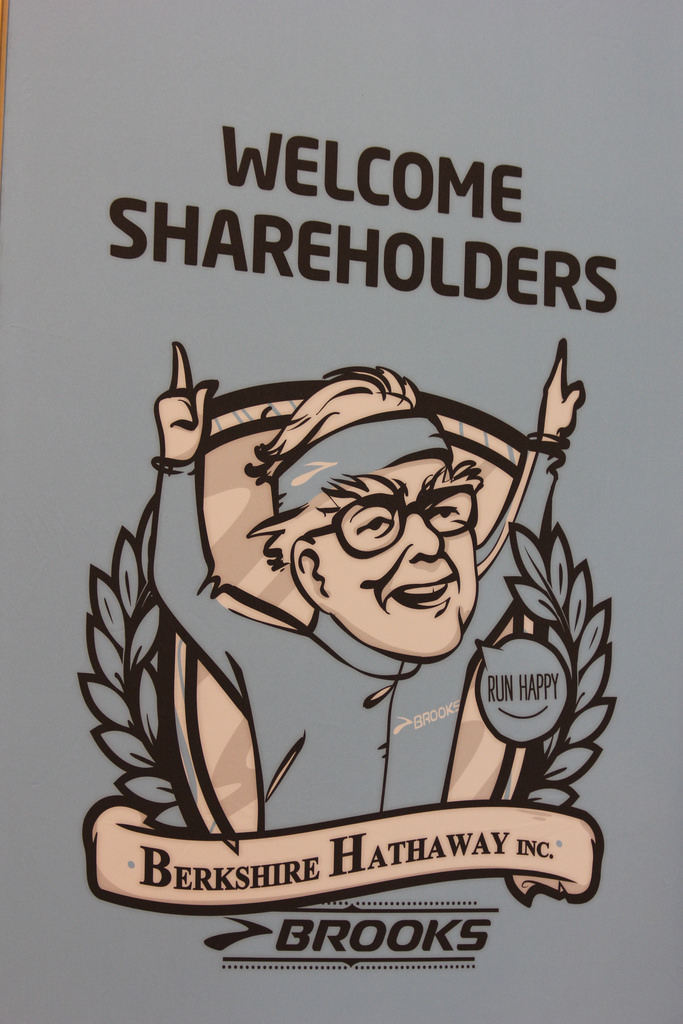One of the hardest parts of analyzing a bank stock is the weird, esoteric, and downright confusing accounting tricks banks use to report their performance. Banks have some of the most convoluted representations of the financial statements of any industry in the U.S. (Check out pages 122-143 here -- the link opens a PDF -- for a taste of a big bank's accounting complexity... it's neither pretty nor fun.)
How can an ordinary investor like you and me cut through the fog, and actually make a decision about a bank stock? According to Warren Buffett, the answer is pretty simple. Look to the bank's return on assets, or ROA.
Why return on assets?
The beauty of ROA is its simplicity. It captures so much of the essence of a bank without getting lost in the complexity of big bank accounting chaos.
At the highest level, return on assets calculates how much profit a bank can produce relative to the assets it owns. In other words, it explains how much money a bank can squeeze out of its stuff. To successfully accomplish that, though, requires a bank to do a lot of things right.

Banks must keep both their interest and non-interest expenses down to maximize their revenue. It's about efficiency and margins.
For Buffett, that's the key to his investment in Wells Fargo (WFC 0.22%). Wells Fargo sits on top of a huge, low-cost base of deposits that provide the bank with cheap funding to profit and grow. It's arguably the bank's greatest competitive advantage. (I'd argue for the bank's credit culture right beside its funding advantage.)
Further, an efficient bank doesn't need to chase risky assets to boost its profits. Banks that survive and thrive in tough economies -- banks like Wells Fargo, among a few others -- are banks that avoid taking on those excess risks. When a bank is efficient, it can afford to be picky and only make loans to the most creditworthy borrowers.
Even further, return on assets is a great method to review a bank's returns without the rosy lens of leverage skewing your perspective. For example, TD Bank (TD +0.15%) reported a stellar 15.5% return on equity in the second quarter. However, looking at ROA, the bank returned a below average 0.9%.
What explains the difference? TD Bank has a ton of leverage on the books that juice return on equity. That leverage represents a lot of risk, particularly in light of the bank's weak ROA.
Four bank stocks with impressive return on assets
Without further ado, let's take a look at some bank stocks with impressive ROA.
| Company |
Return on Assets* |
|---|---|
| SVB Financial Group (SIVB +0.00%) | 2.5% |
| U.S. Bancorp (USB 0.34%) | 1.6% |
| Wells Fargo & Company | 1.5% |
| Prosperity Bancshares (PB +0.24%) | 1.4% |
Data source: S&P Capital IQ. * Last 12 months.
As you may have guessed, Warren Buffett's two largest bank holdings are on the list -- Wells Fargo and U.S. Bancorp. These banks have dividends of 2.7% and 2.3%, respectively. They each have strong efficiency, and neither uses excessive leverage to boost their already impressive return on equity numbers. Either bank would make an excellent investment for the long term.
Houston-based Prosperity Bancshares also makes the cut with its impressive ROA. The bank reported 10.1% return on equity in the second quarter. It's efficiency ratio is among the best in the entire banking industry, and revenues have grown nearly 28% during the past 12 months. Those numbers are hard to beat by any standard.
SVB Financial Group has the highest return on assets of any of the largest U.S. banks. SVB Financial Group is the bank holding company of the Silicon Valley Bank, a specialty lender whose primary business is extending loans to venture-capital-backed start-ups. Its unique business model affords it ample fee income opportunities.
Despite this, though, the bank lags the others on this list in terms of return on equity due to its unusual balance sheet structure. SVB's return on equity was just 1.1% in the second quarter.
At the end of the day, each of these four banks are among the best of the best. They're each unique in their own way, but they similarly squeeze more dollars of profit out of their assets than the rest of the banking industry.









